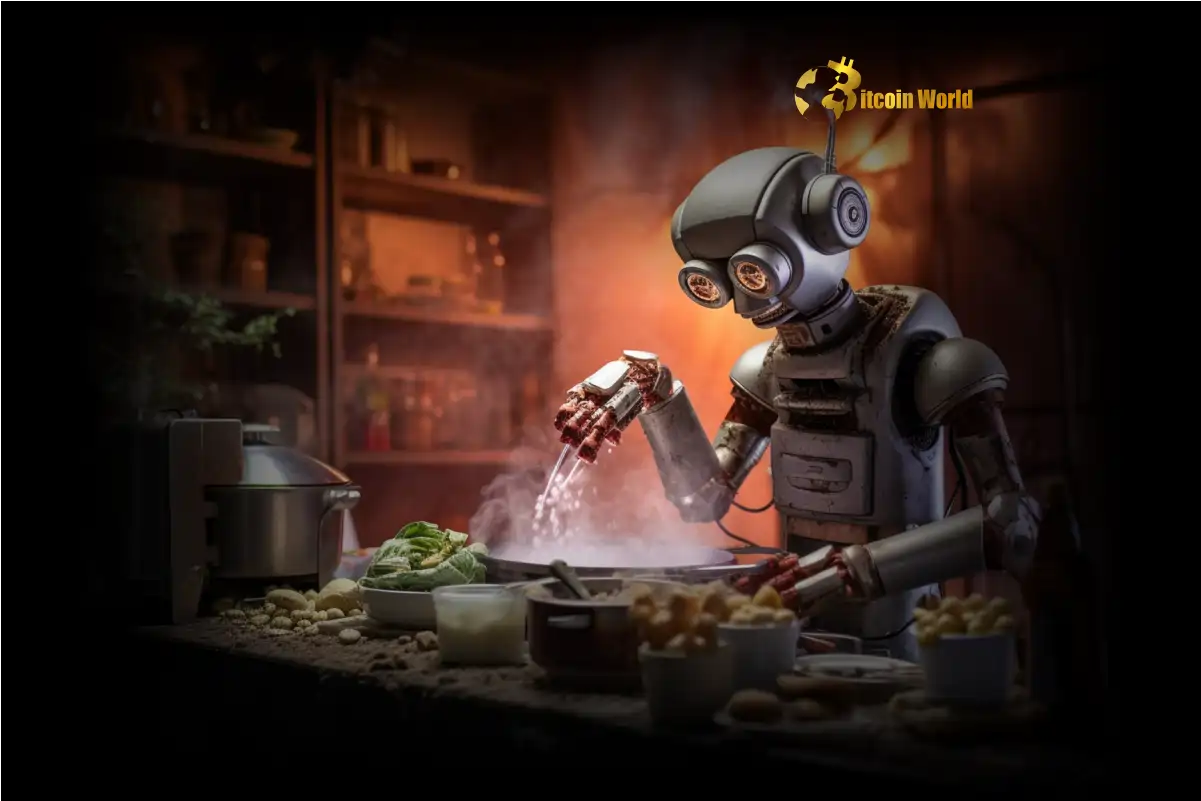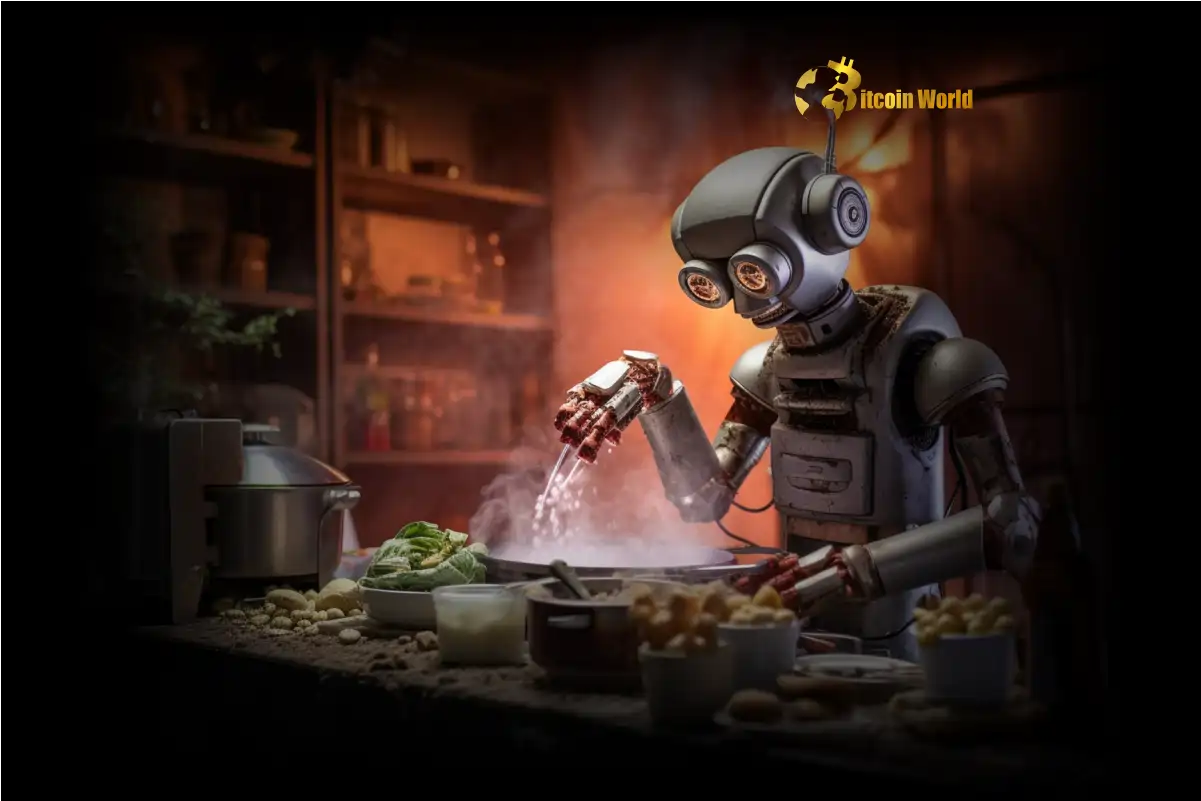In the volatile world of food technology startups, tales of survival are rare, but stories of thriving are even more exceptional. Chef Robotics, a six-year-old company, not only navigated the treacherous early stages but emerged as a beacon of success in the competitive food automation landscape. Founder Rajat Bhageria candidly shares his near-defeat experiences with Bitcoin World, revealing periods so bleak he contemplated giving up. Yet, spurred by encouragement and a relentless vision, Chef Robotics stands tall today. This inspiring journey culminated in a recent $23 million Series A funding round, a team of 40 dedicated employees, and partnerships with industry giants like Amy’s Kitchen and Chef Bombay. Their robots, deployed across the United States, have crafted an astounding 45 million meals. This achievement sharply contrasts with the numerous failed food tech robotics ventures, including Chowbotics, Zume, Karakuri, and Small Robot Company, highlighting Chef Robotics’ unique path to triumph.
The Pivotal Shift in Chef Robotics’ Strategy: Saying No to Survive
Chef Robotics’ journey to success wasn’t paved with initial triumphs but rather with critical pivots. Bhageria’s initial vision, born from his robotics master’s at UPenn’s GRASP Lab, mirrored the dreams of many: robots seamlessly integrating into our daily lives, performing tasks from cooking to cleaning. However, the reality of robotic capabilities, especially in grasping and manipulation, presented a significant hurdle. The challenge, known as the “robotic grasping problem,” is immense. Training a robot to handle diverse objects with varying fragility and weight—from delicate blueberries to heavy cheese blocks—requires vast datasets that simply didn’t exist. This gap in technology directly impacted Chef Robotics’ initial business model.
Initially, Chef Robotics aimed to create robotic solutions for fast-casual restaurants, a sector plagued by labor shortages. They even secured multi-million dollar contracts. However, the fundamental technical challenge of building a robot capable of handling a wide array of ingredients for complex meal assembly proved insurmountable. Restaurants desired robots that could mimic human versatility in assembling complete meals, a task far beyond the reach of current robotic technology without dedicating numerous specialized robots for each ingredient.
Faced with this technical roadblock, Bhageria proposed a phased approach to potential clients: install robots focusing on just one or two ingredients to gather essential training data, gradually expanding capabilities. The response was a resounding no. This rejection, however, became a crucial turning point. Instead of succumbing to customer demands that were technically infeasible, Bhageria had a transformative epiphany: perhaps the problem wasn’t the technology, but the target customer. This realization led to the courageous decision to turn away signed contracts and millions in potential revenue, a daunting choice for any early-stage startup.
Navigating the Funding Winter and Finding the Right Market for Food Tech Robotics
The decision to pivot was further complicated by a challenging fundraising environment post-2021. Venture Capitalists, wary of the growing graveyard of failed food tech companies, showed reluctance. “We talked to dozens of different funds,” Bhageria recalls, “We just got rejected over and over.” Doubt crept in, and the entrepreneurial journey felt increasingly isolating. Yet, Bhageria persevered, driven by a belief in his vision.
In March 2023, Chef Robotics secured an $11.2 million seed round, led by Construct Capital, with participation from Promus Ventures, Kleiner Perkins, and Gaingels. This funding marked not just financial support but validation of their revised strategy. The key to this resurgence was identifying the ideal market: “high mix manufacturing” within the food industry. This sector encompasses food producers creating diverse recipes in large volumes, such as meals for airlines, hospitals, and frozen food brands.
Here’s why this market segment was a perfect fit for Chef Robotics:
- Assembly Line Efficiency: Unlike fast-casual restaurants where one worker assembles an entire meal, high-mix manufacturing uses assembly lines. Each worker adds a single ingredient repeatedly, simplifying the robotic task.
- Addressing Labor Shortages: This industry faces severe labor shortages due to the demanding and unpleasant nature of the work—spending long hours in cold environments scooping food.
- Economic Viability: Flexible-ingredient robots, built in partnership with food manufacturers, became economically feasible in this context, where variety was managed in stages, ingredient by ingredient.
- Data Acquisition for Future Growth: Working with diverse ingredients in high-mix manufacturing provides Chef Robotics with invaluable real-world training data. Each ingredient mastered—chorizo, peas, sauces, zucchinis—enhances the robots’ capabilities and paves the way for future expansion into fast-casual restaurants.
AI-Powered Funding and a Bright Future for Robotic Chefs
The resurgence of investor interest in AI played a crucial role in Chef Robotics’ recent funding success. Bhageria describes the fundraising experience this time as “weirdly easy.” Avataar Venture Partners, actively seeking “AI in the physical world” startups, approached Chef Robotics directly. This led to a swift closing of the latest funding round in under a month, with Avataar leading and existing investors like Construct Capital and Bloomberg Beta increasing their investment.
This new funding, coupled with a $26.75 million loan from Silicon Valley Bank for equipment financing, brings Chef Robotics’ total funding to $38.8 million. The journey, once fraught with uncertainty, is now “exhilarating,” according to Bhageria. Chef Robotics’ story is a powerful testament to the importance of strategic pivots, market fit, and the transformative potential of AI in robotics. By bravely saying “no” to immediate revenue and focusing on long-term technological development and the right market, Chef Robotics has carved a path to sustainable success in the competitive food tech landscape.
To learn more about the latest AI market trends, explore our articles on key developments shaping AI features and institutional adoption.
[ad_2]
Source link






